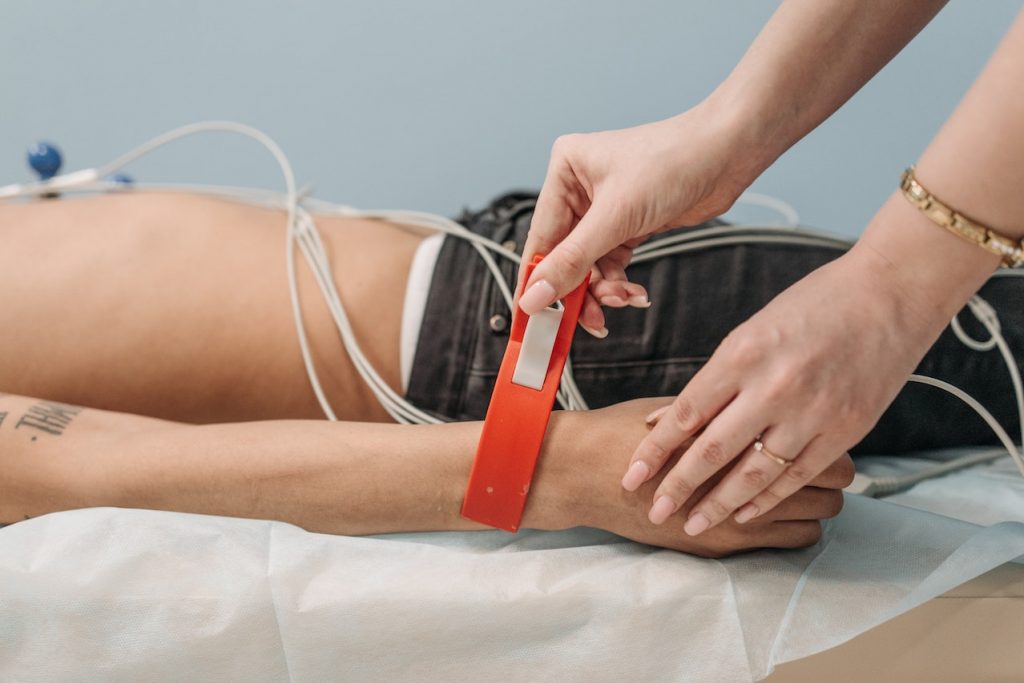Whether you are newly diagnosed with atrial fibrillation or you have experienced it for years, you know that there are a few different treatment options for you to choose from. These include medications, surgery, and even non-invasive treatments. If you have any questions about any of these options, you can contact your doctor at any time.
Atrial Fibrillation Symptoms
Symptoms of atrial fibrillation can include rapid pulse, shortness of breath, and palpitations. People who experience atrial fibrillation may also develop blood clots in the heart, which can lead to stroke. Medications are often used to prevent strokes, and surgery can help reverse the heart rhythm.
In order to prevent atrial fibrillation, you need to be aware of some risk factors. These include high blood pressure, smoking, and certain health conditions. You also need to take care of your diet, exercise regularly, and maintain a healthy weight. You should also avoid stress, which can cause your heart to tense up.
In order to diagnose atrial fibrillation, your health care provider will do a physical exam. They may also order additional tests. The most common tests are blood tests and an electrocardiogram (EKG).
The tests will tell your health care provider if you have a heart rhythm problem. You may also need to take medications to prevent blood clots. You may also be referred to a cardiologist, who can help you determine the cause of your symptoms.

Atrial fibrillation is a very serious condition. It can cause a life-threatening stroke, and it can also lead to heart failure. You should get tested immediately if you experience any of these symptoms. The earlier you see your doctor, the less likely you are to have unchecked damage. You should also keep your blood pressure under control, and you should avoid smoking and excessive alcohol.
If you’ve been experiencing atrial fibrillation symptoms, you should call your doctor right away. They may be able to tell you whether you’re experiencing a heart attack, or if you’re in the early stages of atrial fibrillation. You should also ask about tests, such as a heart monitor, and how they can help you.
A doctor can also diagnose atrial fibrillation based on your medical history. Your health care provider will take into consideration your family history and medical history to determine if you have a high risk for atrial fibrillation. Some people may not have any symptoms at all. These people may not be at high risk for stroke.
Diagnosis
Detecting atrial fibrillation (AF) is important in avoiding complications. It is a condition that can lead to heart failure and stroke. It can also cause a reduction in cardiac performance. If a person is diagnosed with AF, he or she can be treated with medications to reduce the rate of AF.
Studies have found that the risk of stroke increases five-fold in people with AF. The risk is highest in the first year after diagnosis. Symptoms of AF include an irregular pulse, shortness of breath, chest pain, or sudden dizziness. The patient is usually monitored in a hospital while cardioversion is performed.
An electrocardiogram (ECG) is the gold standard for diagnosing AF. It is a painless procedure that takes about five minutes. The patient is connected to an ECG machine by electrodes which are attached to various parts of the body. The machine will trace the heartbeat signals onto paper. The ECG shows the typical pattern of AF.
Studies have found that atrial fibrillation can be detected with several different methods. Some patients are diagnosed during a routine visit to a doctor or nurse. Others do not have obvious symptoms. Still others have intermittent symptoms.
Atrial fibrillation is the leading cause of stroke among older adults. Strokes caused by atrial fibrillation can be fatal. It is important for family physicians to be informed about the latest recommendations regarding antiarrhythmic drug therapy and heart rate control.
The use of sequential cardiac monitoring techniques in patients with stroke can help detect atrial fibrillation in nearly a quarter of patients. In the meantime, oral anticoagulants are being introduced to help prevent strokes. However, all medications can cause side effects. They can also cause unusual bleeding.
If a person has atrial fibrillation, he or she may be referred to a heart rhythm specialist. This specialist can perform catheter ablation to treat atrial fibrillation. Besides controlling AF, these specialists can also help a patient manage the condition. These specialists can also use drugs to control ventricular rate.
Other tests include blood tests to check for abnormal blood chemistry and abnormal thyroid function. Some people may have AF as a result of an overactive thyroid gland.
Atrial Fibrillation Treatment options
Whether your atrial fibrillation is acute or persistent, there are treatments that can help you avoid serious complications. These treatments focus on preventing blood clots and restoring normal heart rhythm.
Typically, treatment for atrial fibrillation consists of medication and non-invasive treatments. Some patients may require a pacemaker. This device is designed to prevent strokes by reversing irregular heart rhythms. It may also be used to treat slow heart rates.
Another treatment for atrial fibrillation is cardiac ablation. This procedure involves burning, freezing or radiofrequency energy to destroy abnormal cells in the heart. It also creates scar tissue that normalizes electrical signals.
For patients who have persistent afib, cardioversion plus anti-arrhythmic drugs may be the best treatment. This type of procedure involves sedating the patient for a short period of time. Then, a shock is delivered to revert the heart rhythm to normal.
Other treatment options include catheter ablation. A catheter is threaded into a vein in the upper leg. A surgeon uses a clamp-like tool to isolate the heart tissue causing atrial fibrillation. The surgeon then ensures that the heart’s abnormal tissue is properly deactivated.
Atrial fibrillation may also lead to heart failure. For this reason, patients may be prescribed anti-arrhythmic drugs to control their heart rate and prevent blood clots. They may also be prescribed blood-thinning drugs to help prevent blood clots.
Atrial fibrillation may also be treated through cardioversion. This type of surgery is performed under general anesthesia. The surgeon places a clamp-like tool on the left atrium near the pulmonary veins. The surgeon then performs diagnostic tests to determine if the heart tissue is abnormal.
The treatment options for atrial fibrillation can be determined by the patient’s age, symptoms, and underlying health conditions. Treatment goals are to prevent blood clots, control heart rate and reduce the risk of stroke. The goal of long-term rhythm control is to assess the patient’s tolerability of anti-arrhythmic drugs. It is also important to consider the risk of long-term anticoagulation.
The goal of this study is to assess the effectiveness of using a device to detect AFib and treat it before it gets out of control. Patients may be able to detect AFib earlier, and if treated, they may be able to avoid having a stroke.
Side effects
Having atrial fibrillation means that you have a high risk for stroke. It can also be a cause of heart failure. Its symptoms include dizziness, fatigue, and shortness of breath. Medications can be used to control the heart rhythm. The side effects of these medications can be dangerous. It is best to consult with your doctor to discuss the medications and their possible side effects. Changing the doses may be necessary. It may be necessary to call 000 if you feel like you are experiencing any side effects.
The European Society of Cardiology published a study that looked at more than 20,000 adults. This study found that the incidence of A-fib increases with age. Several factors were correlated with the occurrence of A-fib. People who were over 65 years old were most likely to have atrial fibrillation. People of European descent were more likely to have atrial fibrillation than African Americans.
During the study, 157 ischemic strokes occurred in the study population. Despite the increased risk of stroke, less than half of the ischemic strokes occurred in people who had concurrent atrial fibrillation. The drugs used for rhythm control may have biased the results.
The rate control group had more cardiac arrest due to bradycardia and electrical-mechanical dissociation. However, total stroke was not significantly different in most groups.
During the study, a total of 9 patients were diagnosed with long-standing persistent A-fib. The 9 patients had either partial or complete ablation. The procedure is minimally invasive and interrupts electrical activity.
During the study, a majority of the patients were male. They had a median age of 60.0 years. The study population included women, but they were less represented than men. There were no significant differences in total stroke, pulmonary embolism, or systemic embolism in the rate control and rhythm control groups.
The main side effect of atrial fibrillation is an irregular heart rhythm. The irregular heart rhythm may lead to poor blood flow to the heart. This leads to cardiomyopathy, a condition where the heart muscle becomes weakened and is unable to pump blood efficiently. A doctor may suggest medications that reset the heart rhythm. A catheter-based ablation can also be used. These procedures are effective in reducing symptoms.
In summary, if you have atrial fibrillation, ask your doctor about these potential treatments that may be available to you. There are new tools to help your doctor find the treatment that’s best for you.





Phenix Health delivers online health services 24/7 provided by Australian doctors and healthcare professionals.